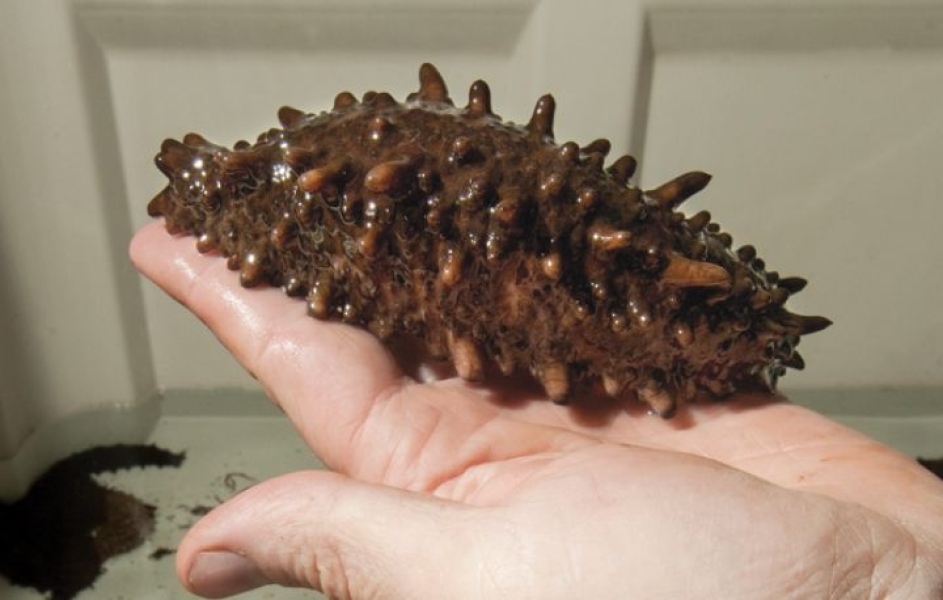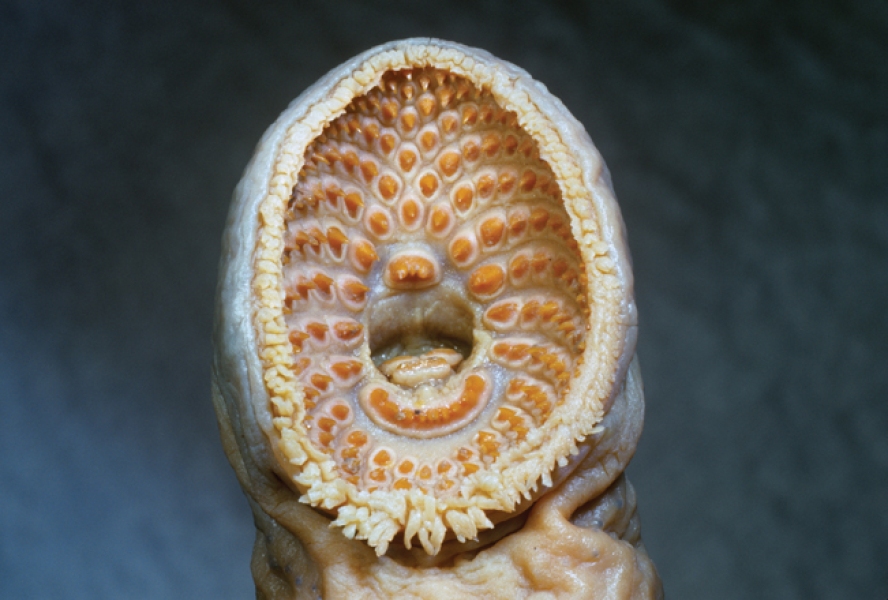News reporting of the natural world tends to focus on ‘charismatic megafauna’ – the big and the beautiful, the strong and the terrible – like polar bears, pandas, whales, and sharks. Far from the easy headlines, however, a fascinating array of smaller, uglier creatures are lynchpins of ecosystems.
Here Water & Atmosphere profiles two of our favourites: a creature which can liquefy its body, and one which uses its sucker-like mouth to drink the blood of its prey.
Sea cucumber: your summer salad?
Sea cucumbers are a delicacy in South Pacific and Asian cuisine, where some people believe they have healing properties.
More than 100 species of sea cucumbers live around the coast of New Zealand, at depths of up to 100 metres. Closely related to the starfish family, the most common sea cucumber in New Zealand is a brown slug-like creature, designed to blend in with its habitat: rocky reefs and sandy bottoms. Sea cucumbers have no eyes and no true brain, but can sense light and touch through tiny nerve endings scattered along their body. They grow to 20 centimetres and live for up to five years.
Moving by using their numerous tiny tube feet, and the rhythmic contraction of their body, sea cucumbers graze on the sea floor like a vacuum cleaner, sucking up plankton and other debris.
The natural predators of sea cucumbers are large fish and starfish. If attacked, sea cucumbers have an unusual defence mechanism because of their unique elastic body walls. They liquefy their bodies and pour into tiny cracks and crevices, and once safe, lock up their collagen fibres, making their bodies firm again in their original form.
NIWA aquaculture scientist Dr Jeanie Stenton-Dozey is researching the potential to grow Australostichopus mollis in marine farms with other species such as finfish and mussels. Processed sea cucumbers (dried, with their insides removed) can fetch up to NZ$500 per kilogram, so the potential commercial returns are tantalising.
“Since sea cucumbers are excellent ecosystem cleaners they can play an important role in eating organic farm waste, while at the same time increasing culture productivity per farmed hectare,” she says.
Contact
Lamprey: vampires of the sea
These ancient creatures like to suck on the flesh and blood of other fish. Lamprey are a similar shape to an eel, but have a large circular, toothed, funnel-shaped sucker instead of a jaw, and use that to bore a hole in their victim’s flesh. Ranging in length from 45 to 75 centimetres, adult lamprey have no bones and only one nostril. They breathe through gill pores on each side of their head.
Lamprey can be found all around New Zealand, in southern Australia, and South America, but are seldom seen and very rarely attack humans. “They are very secretive,” says NIWA Principal Scientist Dr Don Jellyman. “They probably burrow into streambeds and hang out in debris under logs.”
Lamprey are anadromous, starting their lives in freshwater streams, before migrating to sea after four to five years and only returning to breed. In the ocean, lamprey are bright silver with two blue racing stripes along their backs, but in freshwater they sport drab, dark grey camouflage.
Lamprey travel long distances in the open ocean. In freshwater systems, they use their sucker-like mouth to climb over dams, waterfalls, and other structures up to 20 metres high. Once back in fresh water, the adults slowly work their way to the headwaters of rivers where they spawn – they don’t feed during this time, which takes over a year. Nobody has found their spawning nests yet.
Our native lamprey species (Geotria australis) is an important kai source for Maori, but in recent times numbers have declined. In North America, lamprey are classed as a pest because of their abundance in the Great Lakes, where they prey on commercial species such as lake trout. The name ‘lamprey’, a combination of Greek and Latin, means stone lickers (lambere: to lick, and petra: stone). In Maori, they are called piharau (North Island) and kanakana (South Island).



